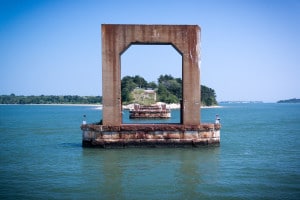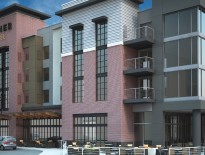There’s just one word to describe plans to build a bridge to reopen a homeless shelter on a real-estate-gold-mine of an island in Boston Harbor: Boneheaded.
In case you missed it, Boston Mayor Marty Walsh wants to build a new, 3,450-foot bridge to connect the now empty homeless shelter and substance-abuse treatment center on Long Island, which is owned by the city, with Moon Island and, from there, to the shore in Quincy. A safety hazard, the previous Long Island bridge was demolished back in 2015.
Walsh is typically a guy with a strong sense of common sense. And he’s dropped hints that this bridge-to-nowhere plan may actually be a play to open 225-acre Long Island to potentially lucrative development.
While that would be welcome news, I hope that’s not Walsh’s approach. It strikes me as sadly Menino-esque, with nonsense of one sort or another offered up for public consumption while the real deal is hammered out in secret over at City Hall.
If there is a more intelligent plan in the works, put it on the table and start hashing it out instead of trying to slip something by the watchful eyes of neighboring Quincy, through which the only access road to the proposed bridge passes.
But for now we can only look at the plan on the table. And that plan is stupendously foolish, highlighting some of the worst aspects of the way crucial real estate issues are handled in Greater Boston.
First off, there has got to be a better way to help the homeless and the people struggling with substance abuse issues amid a raging opioid epidemic than blowing $100 million or more on a bridge.
Boston has already replaced the beds that were lost since the homeless shelter on Long Island was forced to close with the demise of the old bridge. Imagine how far $100 million would go towards battling opioid abuse, including building a new substance abuse center, if needed. There’s no need to build from scratch, either: There has to be surplus city property that could be retrofitted, with city officials recently announcing plans to convert all or parts of more than 80 city-owned properties into badly needed housing.
Ballooning Costs
Boston officials will surely cry foul over the $100 million-plus figure I keep using. After all, they’ve pegged the project at anywhere from $40 million to $100 million – quite a range.
But those estimates have been kicking around since 2014. And, even if everything goes smoothly with the permitting process – unlikely since opposition is already building in Quincy, which controls access to Long Island – it will be at least another two years before construction kicks off.
At a time when the construction market is undergoing an intense boom that is driving up the costs of projects large and small, that time lag is important. Just look at the Wynn casino in Everett. The project, estimated to cost $1.6 billion in 2014, has seen its costs skyrocket 50 percent to an astounding $2.4 billion.
Given the fierce pace of construction inflation, it’s hard to imagine any cost estimate floated by city officials in 2014 will have much relevance in 2020 (barring another Great Recession).
But there’s more at stake here than saving money from being blown on a foolish project.
Boston is sitting on a mountain of new tax and other revenue. Long Island’s value to a developer is likely far beyond its assessed value, which is coincidentally around $100 million. Why not put the island on the market and cut a lucrative lease deal? That money could in turn be dedicated to addiction treatment services.
The development potential is stunningly obvious. Our nation’s august, revered and oh-so-reverently worshipped leader proposed building a marina, condominium and casino complex on the island in 2007. While the Trumpster has managed to make a hash out of just about everything he has ever touched, no one could accuse him of being a slouch when it comes to spotting opportunity.
Don’t Go There, Mr. Mayor
Whatever Walsh and city officials do, they need to be upfront about it. If the plan is truly to build a $100 million-plus bridge so a prime piece of real estate in Boston Harbor can be used as a homeless shelter and treatment center, so be it.
But if the real plan is to push ahead with the bridge project and then, down the line, after the approvals are in hand, suddenly pop up with a development deal, that’s just never going to cut it. You can’t get to Walsh’s bridge without driving through Quincy, and neighbors and city pols are already loaded for bear.
If there is any lesson from the Menino years, which saw more than its share of bitter neighborhood battles over development, it is that secrecy and maneuvering behind closed doors can do far more harm to proposed projects than an up-front, all-out debate.
In too many cases, the battle in the Menino years became as much over how City Hall handled the vetting and approval of projects as it did the merits of the plans themselves. Thankfully, the level of slavishness never approached that of Sean Spicer, but city spokeswomen and men were routinely employed to spout nonsense about how projects actually came about, the true intentions of City Hall and the developer-of-the-moment, and whether the fix was already in, as it often proved to be.
Any thinking person could see the mismatch between the official line and what was really going on.
Mr. Mayor, if you are reading this, please don’t go there. You are far better than that.




 |
| 





